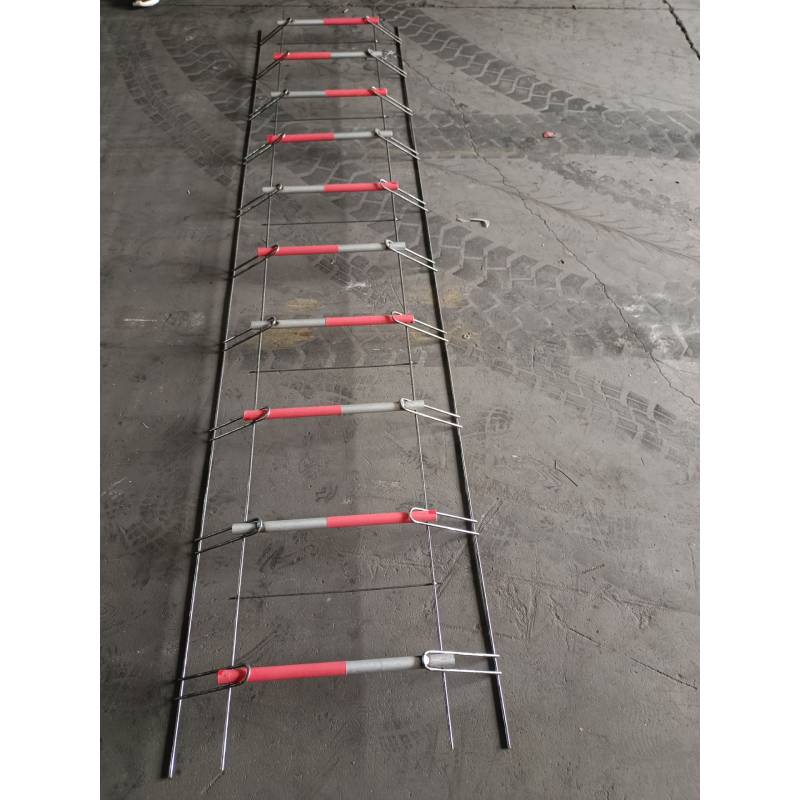
- Mobile Phone
- +8613931874955
- sales@cntcmetal.com
Understanding the Importance of Masonry Block Ties in Construction and Structural Integrity
Understanding Masonry Block Ties Enhancing Structural Integrity
Masonry block ties, often referred to as masonry wall ties, play a crucial role in the construction and stability of masonry structures. These essential components are typically made of steel and are designed to connect masonry walls to adjacent structures or components, ensuring that everything remains securely anchored and structurally sound. In this article, we delve into the importance, types, installation processes, and benefits of masonry block ties.
Importance of Masonry Block Ties
Masonry structures, such as brick or concrete block walls, are commonly utilized in residential and commercial buildings due to their strength, durability, and aesthetic appeal. However, like any construction element, these walls require proper reinforcement to withstand various stresses, including wind loads, vibrations, and even seismic activities. This is where masonry block ties come into play.
Block ties effectively bind masonry walls to framing members, like wooden or metal studs, and help resist lateral forces. This connection is crucial in preventing wall failure, cracking, or separation, particularly in tall or multi-story buildings. Moreover, structural engineers often require specific tie configurations based on the building’s design and anticipated environmental loads, emphasizing the ties' critical role in ensuring safety and stability.
Types of Masonry Block Ties
There are various types of masonry block ties, each tailored to meet specific requirements based on the materials used and the nature of the construction project
. Some common types include1. Horizontal Ties These ties run horizontally between the masonry and the framing. They provide support for the vertical weight of the wall and help distribute loads evenly. 2. Vertical Ties Installed vertically, these ties are essential for reinforcing walls and ensuring that they remain upright, particularly in structures that may be subjected to lateral forces.
3. Shear Ties Designed to resist shear forces, these ties are typically used in multi-story buildings where high wind loads or seismic activity are prevalent.
4. Corrugated Ties These ties are characterized by their wavy design which increases their flexibility and improves load distribution.
Installation Process
Installing masonry block ties is a critical step in the construction of masonry walls. The process generally involves
masonry block ties

1. Planning Before installation, engineers and builders must carefully assess the building design, environmental factors, and select the appropriate tie type and spacing. 2. Placement Ties should be placed at specified intervals, usually within the mortar joints of the masonry. Horizontal ties are implanted every few feet vertically, while vertical ties are placed at regular height intervals.
3. Securing Each tie must be securely anchored to both the masonry and the framing members. This may involve drilling and using mechanical fasteners or welding for metal structures.
4. Inspection After installation, a thorough inspection is crucial to ensure that all ties are properly secured and that the installation meets local building codes and safety regulations.
Benefits of Using Masonry Block Ties
Using masonry block ties offers several benefits
- Increased Structural Integrity Properly installed ties enhance the overall strength and stability of masonry walls, helping them withstand environmental pressures.
- Improved Safety By connecting walls to structural supports, masonry ties significantly reduce the risk of wall failure, protecting occupants and the building itself.
- Versatility Ties can be adapted to various materials and design specifications, making them suitable for a wide range of construction projects.
- Cost-Effectiveness By preventing structural damage, ties can save significant repair costs in the long term, proving to be a worthy investment in construction.
Conclusion
Masonry block ties are an essential component of modern masonry construction, ensuring the integrity and safety of buildings across various applications. Understanding their importance, types, and proper installation techniques is indispensable for builders and architects alike. As we continue to advance in construction technology and methods, masonry block ties will undoubtedly remain a cornerstone of safe and reliable building practices.
share:
-
Your Source for Concrete Wall Ties and Masonry AccessoriesNewsJul.10,2025
-
Unlocking the Power of Iron Wire for Every ProjectNewsJul.10,2025
-
Explore Advanced Chain Wire and Stainless Steel Mesh FencingNewsJul.10,2025
-
Discover the Benefits of Annealed Wire ProductsNewsJul.10,2025
-
Discover China Stainless Steel Wire Mesh SolutionsNewsJul.10,2025
-
Build with Confidence Using High-Performance Masonry AccessoriesNewsJul.10,2025
-
Why Sacrificial Formwork Is Redefining Underground ConstructionNewsJun.06,2025



















